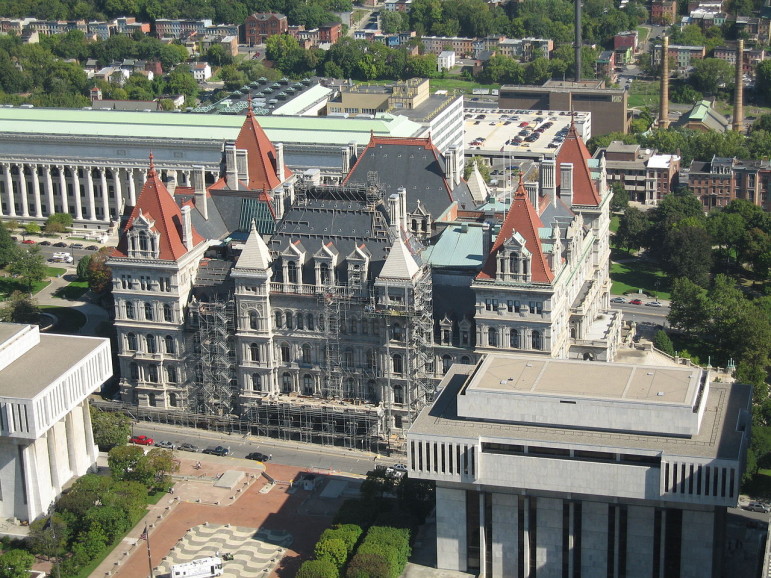
Skeat78
The New York State Capitol, where key housing policy decisions will be made during this week's budget talks.
As lawmakers in Albany negotiate the budget for the coming year, ending New York’s growing housing insecurity crisis by increasing resources for affordable housing should be a top priority. Nearly one-third of New York City renters are housing insecure, spending at least half of their income on rent, according to The Census Bureau’s Housing and Vacancy Survey. That means 600,000 New Yorkers—nearly the population of Boston—are one missed paycheck or one illness away from homelessness.
The costs of housing insecurity are staggering. Families are forced to make toxic tradeoffs between paying rent and putting food on the table. The stress of unstable housing has severe consequences on both mental and physical health. If families fall into homelessness, our city and state governments spend billions of dollars in temporary shelter, emergency room visits and other social services. In New York City, there are nearly 60,000 people, including almost 25,000 children, sleeping in homeless shelters each night.
While people at many income levels experience housing insecurity, finding affordable housing is especially difficult for the lowest income New Yorkers. One way to tackle this problem head on is to increase funding for the New York State Low-Income Housing Tax Credit Program (SLIHC). SLIHC is a state tax credit that leverages public dollars with private investment to encourage the building or rehabilitation of affordable homes. This tool is critical because it finances housing for a broader range of incomes than other affordable housing subsidies. SLIHC reaches many working class families who can’t afford market rate rent such as those with incomes up to 90 percent of Area Median Income (AMI), or $75,500 per year for a family of four. The higher rents from these families can help offset lower rents for those at greater risk of homelessness, making SLIHC one of the few public resources that can reach extremely low-income families earning 30 percent of AMI, or $25,000 for a family of four.
This tax credit is also an important tool for housing seniors, a rapidly growing population in need of affordable housing. Seniors who depend solely on social security often make too little to afford rent even in affordable housing developments. Seniors with additional income from pensions often make slightly too much to qualify for affordable housing, leaving them struggling to pay rent. Our seniors need the kind of flexibility that comes with SLIHC.
Unfortunately, SLIHC is woefully underfunded today. The current funding level is $8 million per year, while the demand is four times higher. To meet this demand, New York needs to increase funding by an additional $150 million over the next five years.
The annual budget process is a time to set New York’s policy priorities. After years of underinvestment, it’s time to make the most vulnerable New Yorkers—extremely low-income families and seniors—a top priority.







